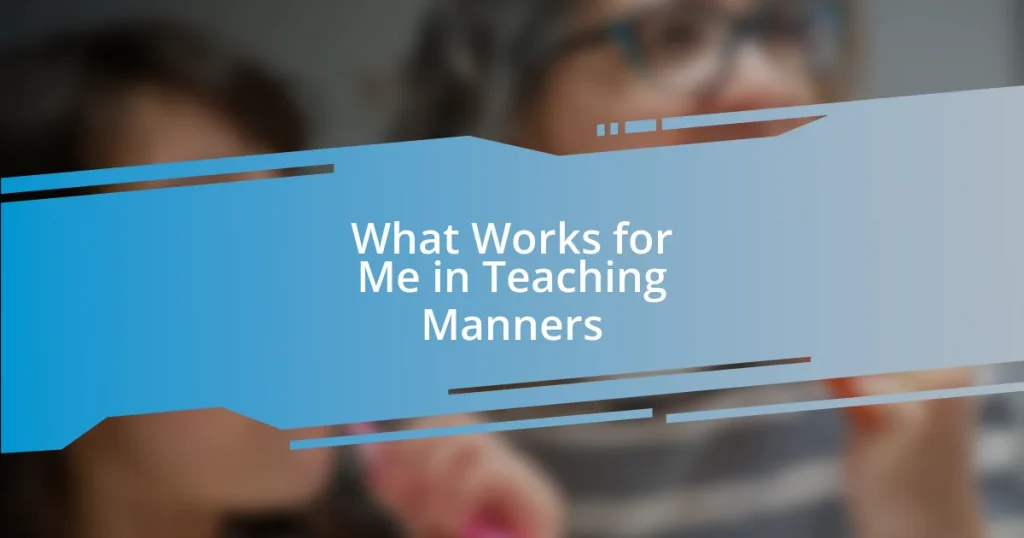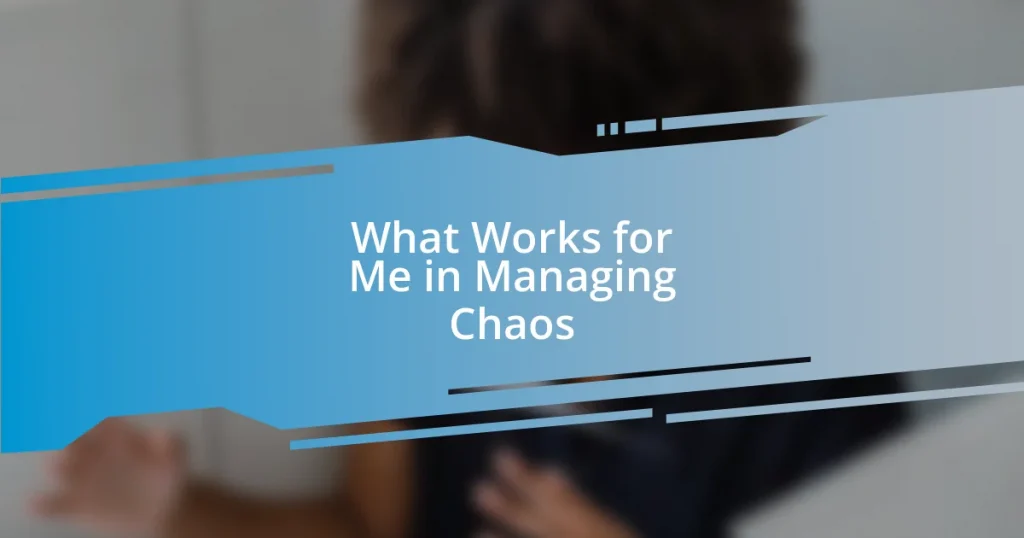Key takeaways:
- Creativity enhances problem-solving skills and emotional intelligence in children, allowing them to view challenges as opportunities for innovation.
- Encouraging open-ended play and diverse materials fosters children’s imagination, giving them the freedom to explore and create in unique ways.
- Measuring creativity involves assessing children’s willingness to take risks and collaborate, reflecting their personal growth and creative development.

Understanding the importance of creativity
Creativity is more than just an artistic outlet; it’s a vital skill that shapes how kids approach problems and engage with the world. I remember a time when my daughter was trying to solve a simple math puzzle. Instead of following the conventional steps, she began to visualize the numbers as characters in a story. This unique perspective not only made the task enjoyable but also led her to a solution in an entirely unexpected way. Isn’t it fascinating how creativity can transform challenges into adventures?
Moreover, fostering creativity in children helps them develop resilience. I once watched a group of kids working on a team project, and when faced with a setback, they didn’t crumble. Instead, they brainstormed alternative ideas, each failure building their confidence to try again. Have you noticed how a creative mind views failure differently? It’s not a dead end; it’s an opportunity for innovation.
Creativity also nurtures emotional intelligence. In my experience, when children express themselves through various arts or imaginative play, they learn to communicate their feelings and understand the emotions of others. While watching my son paint one day, I was struck by the way he captured his feelings of joy and frustration on canvas. In that moment, I realized that creativity is a powerful tool for emotional exploration and connection. How do you encourage kids to express their emotions creatively?
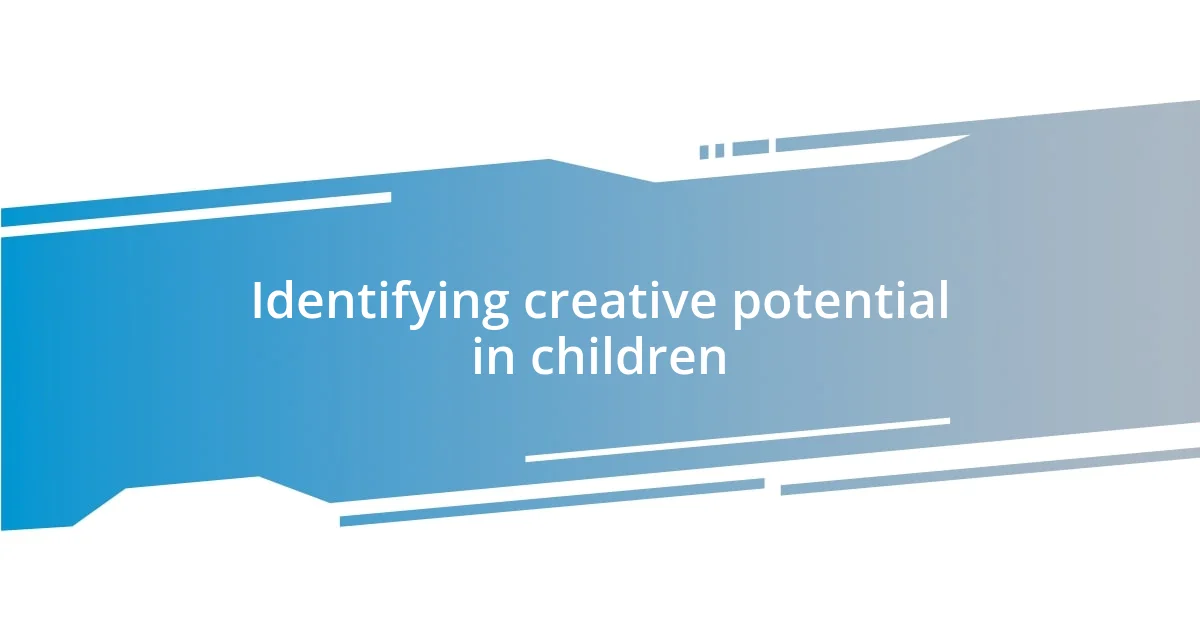
Identifying creative potential in children
When I first started noticing the creative potential in my children, it came unexpectedly. My youngest was simply playing with blocks, and instead of building a house, he constructed a spaceship. I couldn’t help but marvel at how he transformed a mundane activity into an imaginative adventure. This moment taught me to look beyond traditional pursuits and recognize creativity in all forms of play.
Identifying creative potential is not always straightforward. I once attended an art fair where kids displayed their work. Some were traditional drawings, while others were mixed media pieces that were vibrant and unconventional. It was in these unique expressions that I realized creativity often thrives in non-traditional formats. Have you considered how different mediums or styles can reveal a child’s individuality?
Engaging questions can also spark creativity and reveal potentials. One evening, I asked my children what they would invent if they could create anything. Their responses ranged from a robot that could do chores to a treehouse spaceship. These imaginative answers showcased their creative thinking, prompting me to explore new activities that would harness this innovative spirit. Isn’t it amazing how a simple question can open a doorway to a child’s mind?
| Indicators of Creative Potential | Examples |
|---|---|
| Imaginative Play | Transforming ordinary items into new creations. |
| Unconventional Thinking | Approaching a problem with unexpected solutions. |
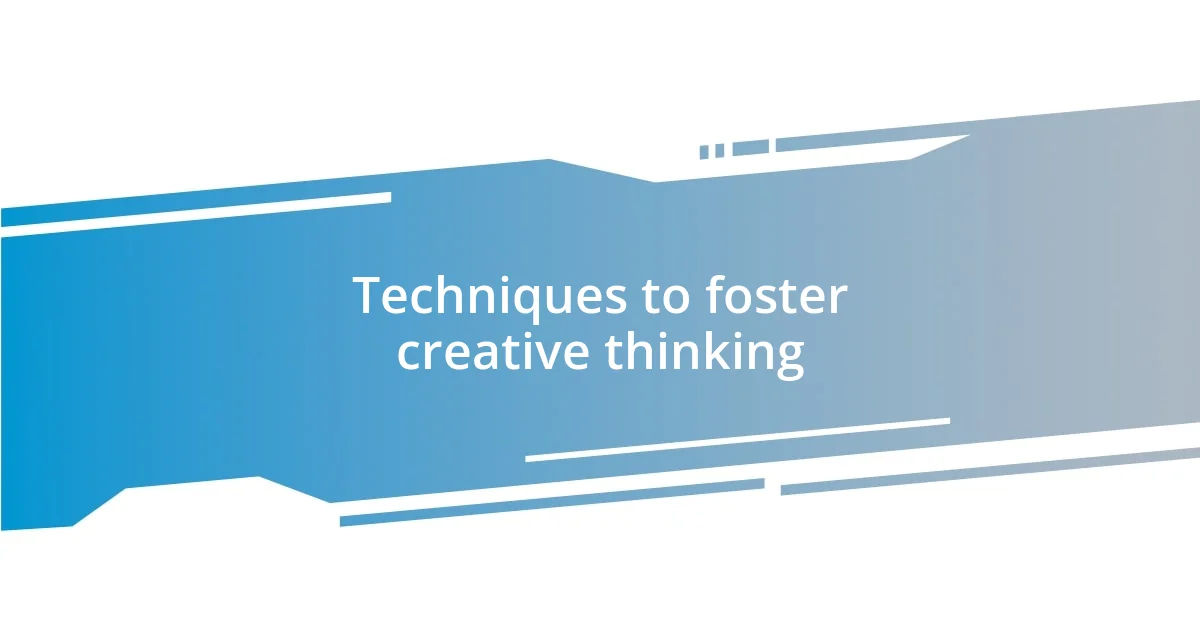
Techniques to foster creative thinking
To foster creative thinking in kids, I’ve found that incorporating open-ended questions during various activities really helps. For instance, while cooking together, I ask my children how they could combine unusual ingredients to create a new dish. The laughter and wild ideas that come from those conversations spark their imagination, allowing them to think outside the box. It’s amazing how they become mini-chefs in those moments, experimenting with flavors they never thought would go together.
Here are a few techniques I’ve discovered along the way:
-
Provide Diverse Materials: I encourage my kids to use recycled items for their art projects. A simple cardboard box can become a castle or a robot!
-
Encourage Storytelling: Whether through writing or digital platforms, storytelling fosters creativity. I’ve seen my children weave elaborate tales that take them on fantastical journeys.
-
Cultivate Curiosity: Taking nature walks and asking them to find anything that piques their interest has led to curious discoveries like unique leaves and interesting rocks. These adventures feed their creativity.
-
Model Creative Problem Solving: Whenever we face a challenge at home, I try to demonstrate different perspectives. For example, if a toy breaks, we brainstorm repair options together. This teaches them that challenges can be tackled creatively.
As my children explore these techniques, I often feel a profound sense of pride. Each time they embrace their creativity, it’s a reminder of the joy in asking “What if?” and “How about?” Isn’t it heartwarming to witness their minds expand with every new idea?

Creating a stimulating environment
Creating a stimulating environment for creativity goes beyond having art supplies scattered around; it’s about setting the stage for exploration. Last summer, I dedicated a corner of our living room to a “creation station,” filled with paints, fabric scraps, and even some glitter (which, I’ll admit, still pops up months later!). Watching my children dive into those materials with pure excitement was a reminder of how impactful a designated space can be. Have you ever noticed how a colorful environment can invite playful experimentation?
I ensure that each room sparks curiosity with something unexpected. For instance, I once placed a large mirror in the garden, allowing my kids to discover their reflections among the flowers, leading to impromptu photo sessions filled with laughter and imaginative role play. This simple addition encouraged them to see the world from a different angle. What surprising elements can you introduce to your environment that might awaken a sense of wonder?
Additionally, I love to rotate activities in our space regularly. One week, it might be a craft project focusing on nature, and the next, it might involve building structures with everyday items like kitchen utensils. This variation keeps their interest alive and encourages them to think creatively about resources at hand. Doesn’t it feel invigorating to witness their enthusiasm as they tackle a new challenge? Each time they engage with new materials or concepts, I feel a swell of pride carving joyful memories for all of us.
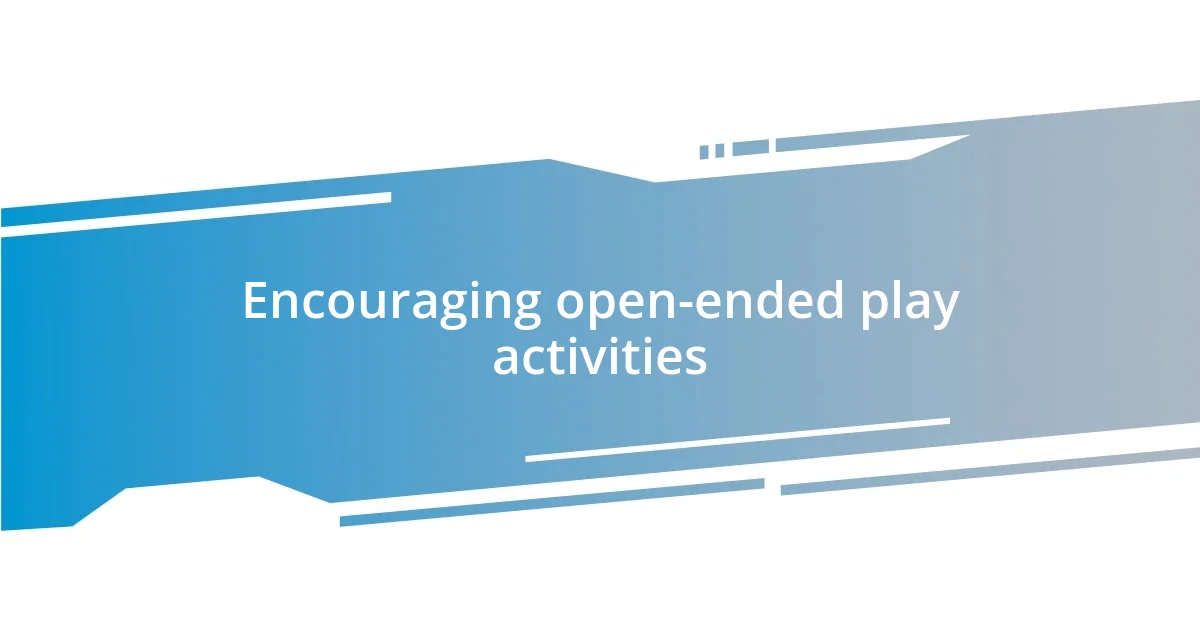
Encouraging open-ended play activities
Encouraging open-ended play activities is one of the most rewarding approaches I’ve adopted with my kids. Recently, I set up a simple scene in our backyard with a few old sheets, some garden furniture, and some random kitchen pots. To my delight, they transformed that space into a pirate ship, complete with a treasure map! Watching their creativity unfold made me realize how powerful it is to give children the freedom to play in whatever way they choose. Don’t you just love those moments when kids surprise you with their imaginative worlds?
I also encourage open-ended play through improvisational games. For instance, we often play a game where we create a story together, each taking turns to add a new element. One time, our story led to a talking dog who became a detective in a world made entirely of candy! This not only boosts their imagination but also strengthens our bond as we laugh together. Have you ever noticed how quickly children pick up these ideas and run with them, crafting tales that reflect their unique perspectives?
One of the simplest ways to promote open-ended play is by minimizing the structure of the activities I provide. Instead of setting strict rules, I give my kids the freedom to manipulate materials however they wish. A pile of building blocks doesn’t just become a house; it can be a spaceship or a mountain range! I’ve found that this lack of limitations allows their creativity to flourish, giving them ownership of their playtime. What would your children create if they had the freedom to imagine without boundaries? It’s fascinating to watch them discover the limitless possibilities when creativity is truly encouraged.
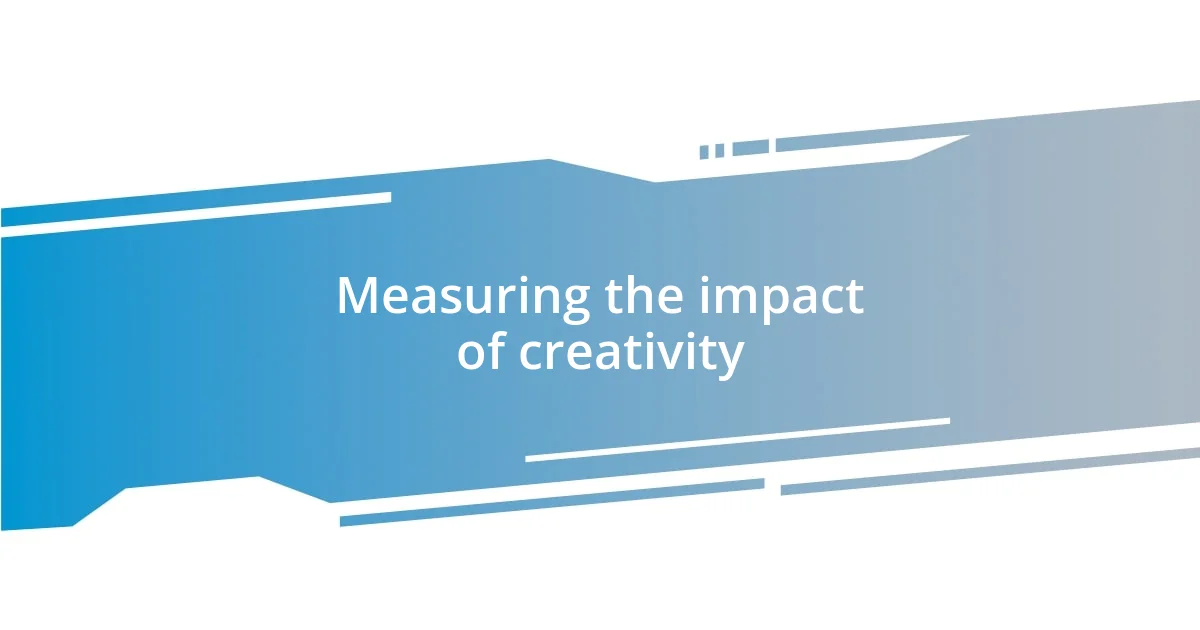
Measuring the impact of creativity
Measuring the impact of creativity in children can be quite enlightening. I recall a time when I implemented a simple art project, encouraging my kids to express their feelings on canvas. The range of emotions they poured into their work was surprising and heartwarming. It made me realize that creativity isn’t just about the final product; it’s about the journey of self-expression. Have you ever watched a child’s face light up when they create something meaningful?
To truly gauge their progress, I often assess their willingness to experiment and take risks in their creative endeavors. I remember one particular day when my daughter decided to mix every color of paint she could find to create a “magical potion.” Initially hesitant, she soon embraced the chaos, laughing as she watched the colors swirl together. Moments like this illustrate how confidently they can approach challenges, transforming potential failure into playful learning. Doesn’t this shift in mindset speak volumes about creative growth?
Another effective method of measuring creativity is through observation of collaborative play. After organizing a backyard scavenger hunt, I watched my kids team up to create a fantasy world with the treasures they collected. Their brainstorming sessions and problem-solving sparked insight into their ability to communicate and collaborate creatively. It left me pondering: how frequently do we recognize the importance of cooperation in fostering creativity? Understanding these dynamics not only helps quantify creative development, but it also highlights the myriad ways imagination can flourish through shared experiences.














